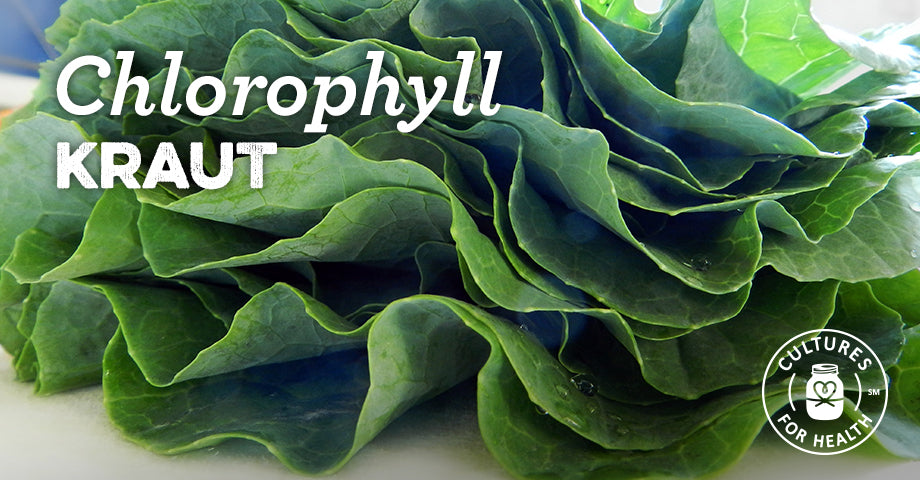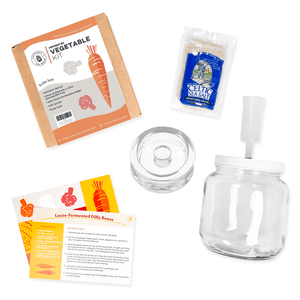
Chlorophyll is the lifeblood of plants, and is known as an important part of a healthy human diet. Foods rich in chlorophyll include any dark green leafy vegetable or herb. By combining cabbage with collard greens and fresh parsley, this kraut packs an extra punch of chlorophyll.
15 minutes
45 minutes
4
INGREDIENTS AND EQUIPMENT AVAILABLE AT CULTURES FOR HEALTH
Fermented Vegetable Kit

Fermented Vegetable Kit
$35.99
Make tasty fermented veggies at home with our DIY Fermented Vegetable Kit!
This kit is also great for making kimchi, sauerkraut, and more! Equipment in the kit may appear different than pictured.
Grey Celtic Sea Salt
INGREDIENTS:
- 1 large head green cabbage
- 2 bunches fresh parsley
- 2 small, or 1 very large, bunch of fresh collard greens
- 4 garlic cloves
- Juice of 1/2 lemon
- 4 Tbsp. sea salt
- Additional brine as needed: 1 quart water plus 2 Tbsp. sea salt
INSTRUCTIONS:
- Shred the cabbage and put it in a large bowl.
- Remove stems from collard leaves, roll the leaves, and slice vertically into 1-inch pieces. Turn and chop horizontally into 1-inch pieces. Repeat with all of the remaining collard greens.
- Mince parsley and garlic cloves and add to cabbage and collards. Add the lemon juice.
- Sprinkle in the salt and mix well with clean hands, massaging in the salt. Pound with a Cabbage Crusher or potato masher for 5 minutes to allow the juices to come out of the cabbage.
- Transfer to a clean fermentation vessel. Pack down firmly using a clean fist, or a wooden spoon or pounder. The brine should come at least 1 inch above the level of the vegetables. If it doesn’t, add brine as needed.
- Cover the jar with a tight lid, airlock lid, or coffee filter secured with a rubber band.
- Culture at room temperature (60-70°F is preferred) until desired flavor and texture are achieved. If using a tight lid, burp daily to release excess pressure.
- Once the kraut is finished, put a tight lid on the jar and move to cold storage. The kraut's flavor will continue to develop as it ages.
















